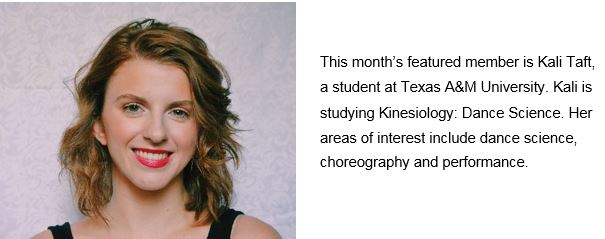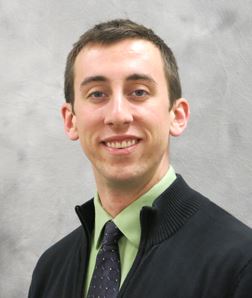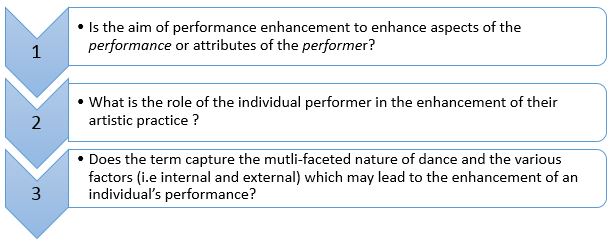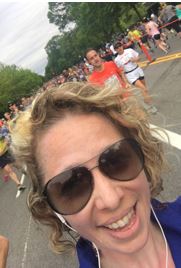Blog
IADMS 2017 DUEL: Should dancers run?
This year's Annual Conference will host a few IADMS DUELS!
Here, we will introduce you to the two duelists debating SHOULD DANCERS RUN?
Read ArticleIADMS 2017: Speaker Jatin Ambegaonkar
Introducing Jatin Ambegaonkar - a featured speaker at this year's Annual Conference and the Chair of the IADMS Research Committee. Check out an interview with Jatin here.
Read ArticlePhysiological perspectives on puberty in dance
Author: Siobhan Mitchell on behalf of the IADMS Dance Educators’ Committee
In our last blog post, Siobhan focused on the psychological perspectives on puberty in dance training and here follows our second post in the series, this time focusing on the physiological perspectives on puberty in dance. These posts follow on from our busy season of Regional Meetings in Australia, USA and UK where the focus of much of our discussions at these events was on how we work with children and young people to optimize their training. Siobhan presented her session at the Healthier Dancer Day on The Adolescent Dancer in Ipswich in May 2017.
Read Article5 Questions With Kali Taft
This month's featured member is Kali Taft, a student at Texas A&M University. Kali is studying Kinesiology: Dance Science. Her areas of interest include dance science, choreography and performance.
Read ArticlePsychological perspectives on puberty in dance
Author: Siobhan Mitchell on behalf of the IADMS Dance Educators’ Committee
Following on from our busy season of Regional Meetings in Australia, USA and UK, the focus of much of our discussions at these events was on how we work with children and young people to optimize their training. Siobhan presented her session at the Healthier Dancer Day on The Adolescent Dancer in Ipswich in May 2017. Here follows one of two posts, focused on the psychological perspectives of puberty when working with young dancers. Watch out for our forthcoming post which will focus on the physiological aspects too.
Read ArticleHow principles of dance science inform a student’s training and performance: A student dancer’s perspective
Author: Gemma Harman on behalf of the IADMS Dance Educators’ Committee
This is the second of Gemma’s posts in which she explores the notion of performance enhancement. Find the first installment here. In this second post, Gemma summarizes her own research and suggests how students view the principles of dance science in enhancing their training and performance.
Read Article5 Questions With…K. Michael Rowley
This month’s featured member is K. Michael Rowley of the University of Southern California. Michael is a PhD candidate working in the Jacquelin Perry Musculoskeletal Biomechanics Research Lab in the Division of Biokinesiology and Physical Therapy studying recurrent pain. His areas of interest include postural control, cognitive contributions to posture, dance injury prevention and recurrent low back pain.
Read ArticleWhat is ‘Performance Enhancement’ in an artistic context?
Author: Gemma Harman on behalf of the IADMS Dance Educators’ Committee
Our next two posts from the IADMS Dance Educators’ Committee question what we really know about performance enhancement from a dance science perspective and from the individual dance artist’s point of view.
Read ArticleWhat I Learned About Fueling My Dancing from Cross-Training
Author: Stevie Oakes on behalf of the IADMS Dance Educators’ Committee
Preparing myself nutritionally for a long dance day has always been a little tricky. As a contemporary modern dancer, rehearsals alternately require endurance or short bursts of power (usually both, in my experience, throughout the course of the process); the “right” combination of preparing with solid meals before hand with adequate and healthy snack options while not feeling too full seemed elusive. And while my education and interest in wellbeing – plus lots of resources and publications from the IADMS team - gave me a starting off point for balanced meals, energetic needs, and nutritional considerations, I found out the most from tuning in to sensation. Challenging myself physically and meeting those needs with good eating habits.
Read Article5 Research Insights on Technique Proficiency for Busy Dance Teachers
Author: Clara Fischer Gam
Dance teaching is a daily challenge. Being in the studio for long working hours, preparing different classes for the term and dealing with the individualities within a group of students are some of the struggles and joys of the teaching practice. As we work against the clock with dancers to keep up with the timetable and achieve aesthetic quality and mastery of technique, the time for reflecting upon experience and investigating new pathways for student learning becomes scarce.
Read Article- IADMS 34th Annual Conference - Experience Point of View: Jennifer Milner
- IADMS 34th Annual Conference - Experience Point of View: Joanna Nicholas
- IADMS 34th Annual Conference - Experience Point of View: Erika Mayall
- Beginning ASL for Medical Students & Health Practitioners
- Relative Energy Deficiency in Dance





 BACK
BACK